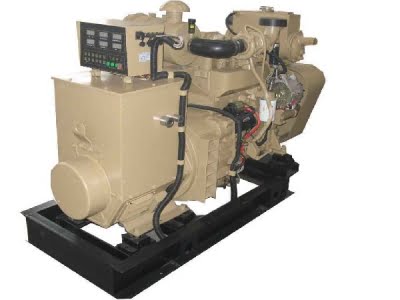While buying a diesel generator, people are usually worried about the high levels of noise. This is because there is a common notion that these equipment are noisy. However, this really depends on the frame of reference. If you’re comparing the noise generated from a gen-set to quiet place, then we have nothing to argue. Although, when compared to rocket launch noise a generator is actually pretty quiet. Read about how can you reduce diesel generator noise. However, we’re not here to debate, but we’re here to help.
Here are 5 ways to make your diesel generator quieter:
-
Distance
The easiest way to reduce the noise from a generator is to increase the distance between yourself and the place where the diesel generator is installed. When the generator is moved further away, the energy is spread over a greater distance and therefore there is a decrease in acoustic intensity. According to the general rule, when you double the distance, you can reduce the noise by 6dB. However, if you have bought a used diesel generator for sale, consult the previous user – what steps they were taking to reduce noise, which will help you take better decisions.
-
Acoustic Barriers – Walls, Enclosures, Fencing
Solid surfaces restrict the transmission of noise by reflecting sound waves.
Installation of a generator in an industrial unit will ensure the concrete walls will act as acoustic barriers and limit the emanation of sound beyond that area. the achievement of noise reduction up to 10dB happens when the generator is inside standard generator canopies and enclosures. A bigger reduction of noise can happen when generators are put in custom-built enclosures.
Use acoustic fencing to create an extra barrier, if enclosures don’t help enough. Impermanent acoustic fencings are quick and effective solutions for construction assignments, utility networks as well as outdoor occasions. Installation of permanent and custom built acoustic screens will be helpful for larger installations.
Use acoustic fencing to create additional barrier if enclosures alone don’t do the trick.
3. Acoustic Insulation
Acoustic barriers reflect sounds waves and restrict noise only beyond the barrier. However, in order to reduce the noise, echo, and vibration within the generator enclosure/industrial room you’ll need to insulate the space to absorb the sound. Insulation involves lining hard surfaces with sound-absorbing materials or installing acoustic wall panels and tiles. Wall panels built from perforated steel are the usual choice for industrial applications, however, a variety of materials are also available and used.
4. Anti-vibration Mounts (AVM)
Limiting the noise at source is another great way to reduce noise from your generator.
Setting anti-vibration mounts underneath the generator removes vibrations and decreases noise transmission. Anti-vibration mounts are available in a lot of different options. Some examples of such mounts are rubber mounts, spring mounts, spring mounts, and dampers. Your choice will depend on the amount of noise you need to achieve.
Along with insulating vibrations at the generator base, fitting flexible joints between the generators and connecting systems reduce the noise transmission to surrounding structures.
5. Attenuators
For industrial generators, the most effective way of reducing noise transmission is through attenuators. It is a device which enables large amounts of air to pass through it but limits the transmission of noise. Air swirls between the splitters which absorb the sound and reduces the wavelength. It is worth noting that an attenuation system can reduce sound to something between 50-90dB. And according to the general rule, great noise reduction can happen with a larger attenuator.
The above tips to reduce generator noise are perfect when you have already had a generator. You can contact us to know more about diesel generators. We will help you buy the apt generator according to your needs. We will even install it appropriately for a noise free environment.







